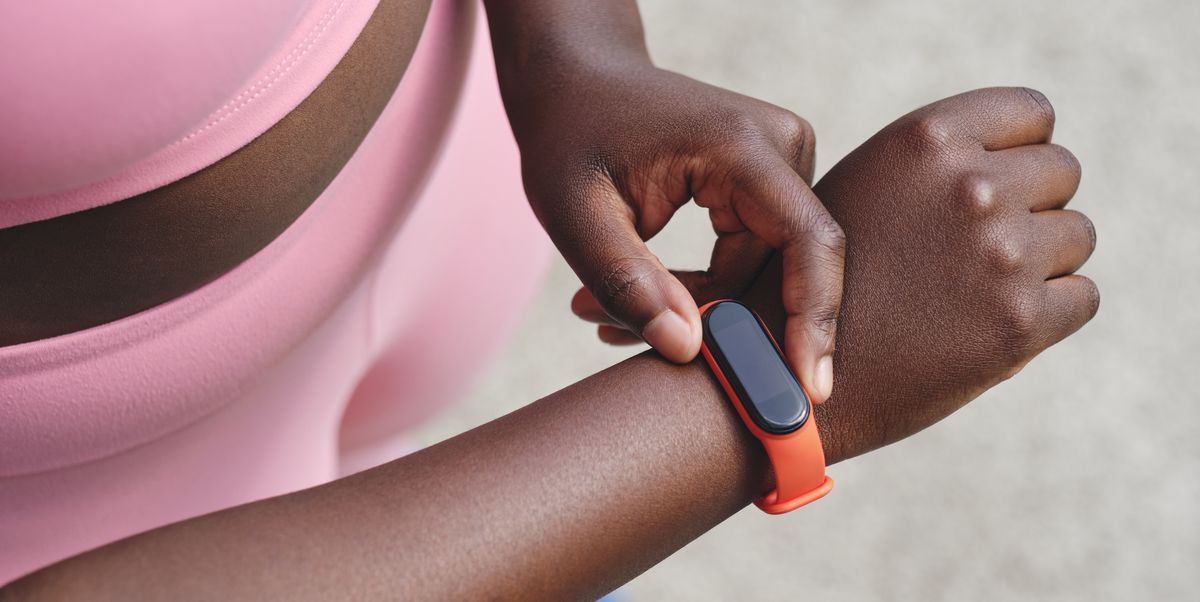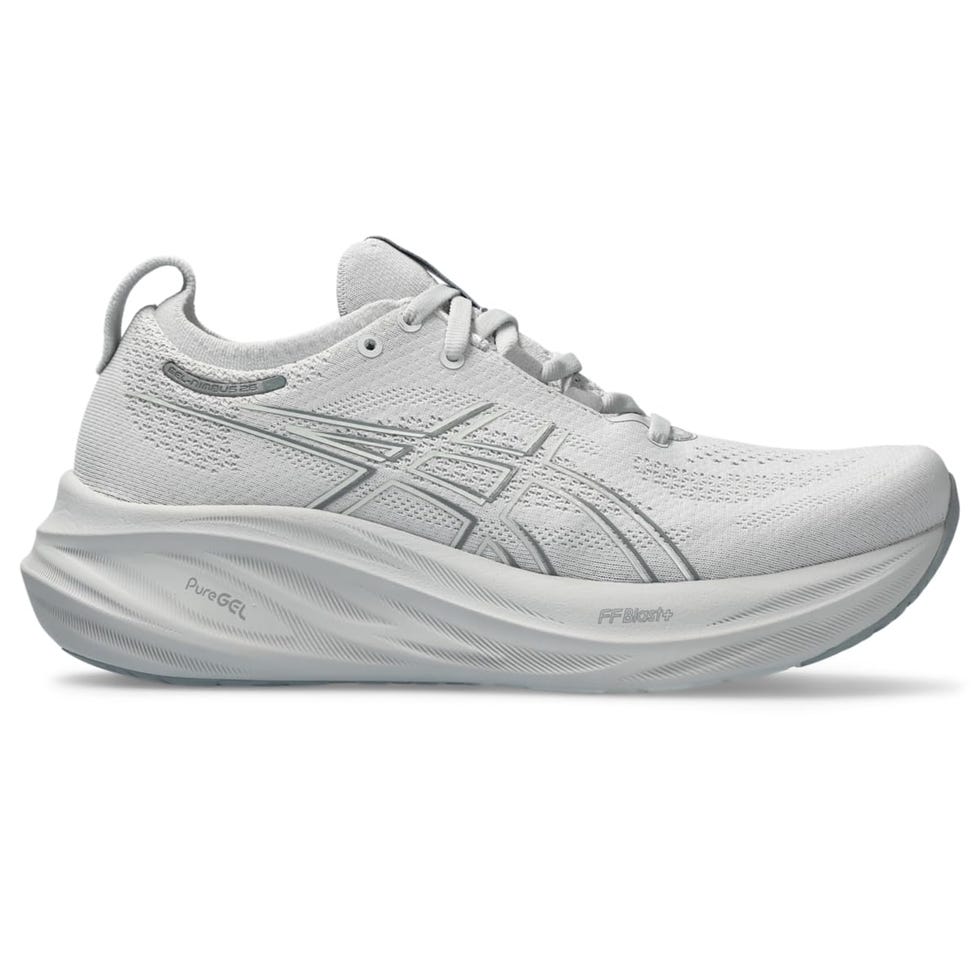On average, thousands of people ask Google for advice on “How many steps a day to lose weight?” every month. So, we’re here to clear up the confusion. Whether you’re not convinced 10,000 steps is working for you, or it’s just not possible for you to hit that number, WH has the expert intel on how many steps a day are *actually* needed when it comes to walking for weight loss, how you can make your walk more of a workout, how many calories you’ll burn with 10,000 steps, and more.
Get our exclusive 4-Week Walking Plan: Burn Fat, Build Muscle to level up your walks and see real results fast.
The U.S. Department of Health recommends at least 150 minutes of moderate intensity activity—e.g. walking—or 75 minutes of vigorous intensity activity a week.
It will come as no surprise that the higher the intensity, the more calories you burn. Though it varies according to sex, age, terrain and climate, according to the American Heart Association, each mile you walk burns between 55 and 140 calories.
So, how many steps should we do a day to lose weight? Here’s everything you need to know.
Meet the experts: Elliot Upton, CPT, is a personal trainer and owner of Elements Gym Marbella in Spain. Scott Laidler, CPT, is a personal trainer based in the UK.
How Many Steps A Day To Lose Weight: The 10,000 Step Myth
According to one study investigating step count in Great Britain, 58 percent of participants were trying to reach the goal of walking 10,000 steps a day in 2019, with 38 percent choosing to monitor their daily step count. However, over half estimated their own average daily step count sits at just 5,836 steps—a little over half of what they should be doing for optimum fitness.
That’s pretty far off from the golden 10,000. But is the magic number really all that? As it turns out, the 10,000 steps goal is not particularly scientific.
What most people don’t know is that this number came about when a Japanese academic invented an early pedometer in 1964 and deduced that, if citizens went from an average of 4,000 steps a day to 10,000, then they’d stand to burn in the region of an extra 500 calories. The increase in daily activity would, in turn, be reflected in the amount of energy burnt.
But, and here’s where it gets sketchy, this could be true for any number that increases. So, definitely don’t get hung up if you don’t reach 10,000 on your fitness tracker. In fact, the NHS states that just a brisk 10-minute walk could improve your health.
The Real Step Recommendation For Weight Loss
There’s no one-size-fits-all step count when it comes to losing weight—it depends on your routine, lifestyle, and what’s actually realistic for you. Logging 20,000 steps a day might sound impressive, but it won’t serve you if it leaves you stressed or sleep-deprived. Instead, aim for a number that fits your life and feels sustainable. Any movement is better than none—research shows that walking just 4,400 steps a day can lower your risk of death by 41 percent compared to fewer than 2,700.
That said, if your goal is weight loss, some structure can help. Walking contributes to your overall calorie burn and helps increase NEAT (non-exercise activity thermogenesis), which refers to the energy you burn outside of structured workouts. Daily activity levels can be broken down by step count, according to personal trainer Elliot Upton, CPT:
- Less than 5,000 steps – sedentary
- 5,000–9,999 steps – lightly active
- 10,000–12,500 steps – active
- 12,500+ steps – highly active
If you’re aiming to lose body fat, targeting 10,000 to 12,500+ steps per day—alongside a nutrient-dense, calorie-appropriate diet—can help support that goal. Just remember: walking alone isn’t the end-all for fat loss. Nutrition, sleep, and stress management matter too.
How To Lose Weight By Walking
If you’ve taken all of the above into account, our experts have a few tips if you’re looking to use walking to augment your weight loss.
1. Vary The Terrain
“If you’re really committed to using walking as a key weight loss tool, I would do variable terrains,’ she says. “Everything from cross country and hilly walks to beach walks and roads.”
This will challenge you, as the uneven terrain stimulates different muscles in the ankles, knees, hips and core, she explains. “You can also choose to power it up by walking up a few hills or an incline to work your heart, lungs and your whole body a little more.”
2. A Brisk Pace Is Best
If you’re looking to make the most of your daily walk, personal trainer Scott Laidler, CPT, has some advice on turning it up a notch.
“If your goal is weight loss, I’d recommend aiming for 5,000-7,000 steps performed at an elevated or brisk pace,” Laidler says. Why? Because speeding up your stroll and walking uphill will increase your heart rate—and that’s when you begin to burn calories.
“When your heart rate reaches upwards of 100-120 bpm, age-dependent, [or roughly 60-70 percent of your maximum heart rate; 220 minus your age], you enter what’s known as the fat-burning zone, where fat is used as your primary energy source,” Laidler adds. In other words, you torch cals.
3. Mixing It Up Can Also Help
Eastwood suggests adding some slower walks into the mix, too. “Speed walking is great, but mix it with some slower and longer-paced sessions too. And make sure you’re activating your muscles whilst you walk to give you a full-body workout.”
‘Make sure your posture is strong, with your neck and back in a neutral spine and your glutes activated,’ she adds. ‘This means your muscular and skeletal systems are both getting a good workout.
Make your walk more of a workout by trying this four-week walking plan.
4 Tips For Hitting Your Daily Step Goal
It can be difficult to get your steps in regardless of what your day-to-day looks like. Fortunately, we have some fail-safe tips to keep you up and at ’em when life gets busy.
1. Up your water intake.
Aim to drink a certain amount of water each hour while working, say, half a pint, and set a timer to remind you to get up and refill your glass. You might only be walking to the sink but it’s still something.
2. Enforce a ‘social stroll’ rule.
A what? Let us explain. Ever find yourself slumped on the sofa, endlessly scrolling through Insta posts? Thought so.
Instead, stand up every time you want to check social media and walk around until you’ve finished your snoop session.
3. Kill time with walking.
While the kettle boils, while TV ad breaks are running or while you’re waiting to use an occupied loo, just walk it out. Aim for a few stair ascents or hallway ambles.
4. Listen to a podcast.
Walking can feel slightly aimless if you’re just getting out there to get it done. Put on a health podcast, audiobook or playlist and walk for the length of time it plays for. An easy fix that’s enjoyable too.
The Best Gear To Help You Hit Your Step Goals

Kirsti is a health and fitness journalist, a personal trainer and tech junkie. She’s a South African journalist who followed her passion for health and fitness all the way to the UK, where she now spends her days sweating it up and perfecting her form in gyms all over London.
Morgan Fargo is a freelance beauty and wellness editor. Her CV includes Women’s Health Magazine UK (and sister publication Women’s Health Australia), Stylist Magazine and more.
As Women’s Health UK’s fitness director (and a qualified yoga teacher), Bridie Wilkins has been passionately reporting on exercise, health and nutrition since the start of her decade-long career in journalism. She secured her first role at Look Magazine, where her obsession with fitness began and she launched the magazine’s health and fitness column, Look Fit, before going on to become Health and Fitness writer at HELLO!. Since, she has written for Stylist, Glamour, Cosmopolitan, Marie Claire, Elle, The Metro, Runner’s World and Red.
Now, she oversees all fitness content across womenshealthmag.com.uk and the print magazine, spearheading leading cross-platform franchises, such as ‘Fit At Any Age’, where we showcase the women proving that age is no barrier to exercise. She has also represented the brand on BBC Radio London, plus various podcasts and Substacks – all with the aim to encourage more women to exercise and show them how.
Outside of work, find her trying the latest Pilates studio, testing her VO2 max for fun (TY, Oura), or posting workouts on Instagram.
Read the full article here






